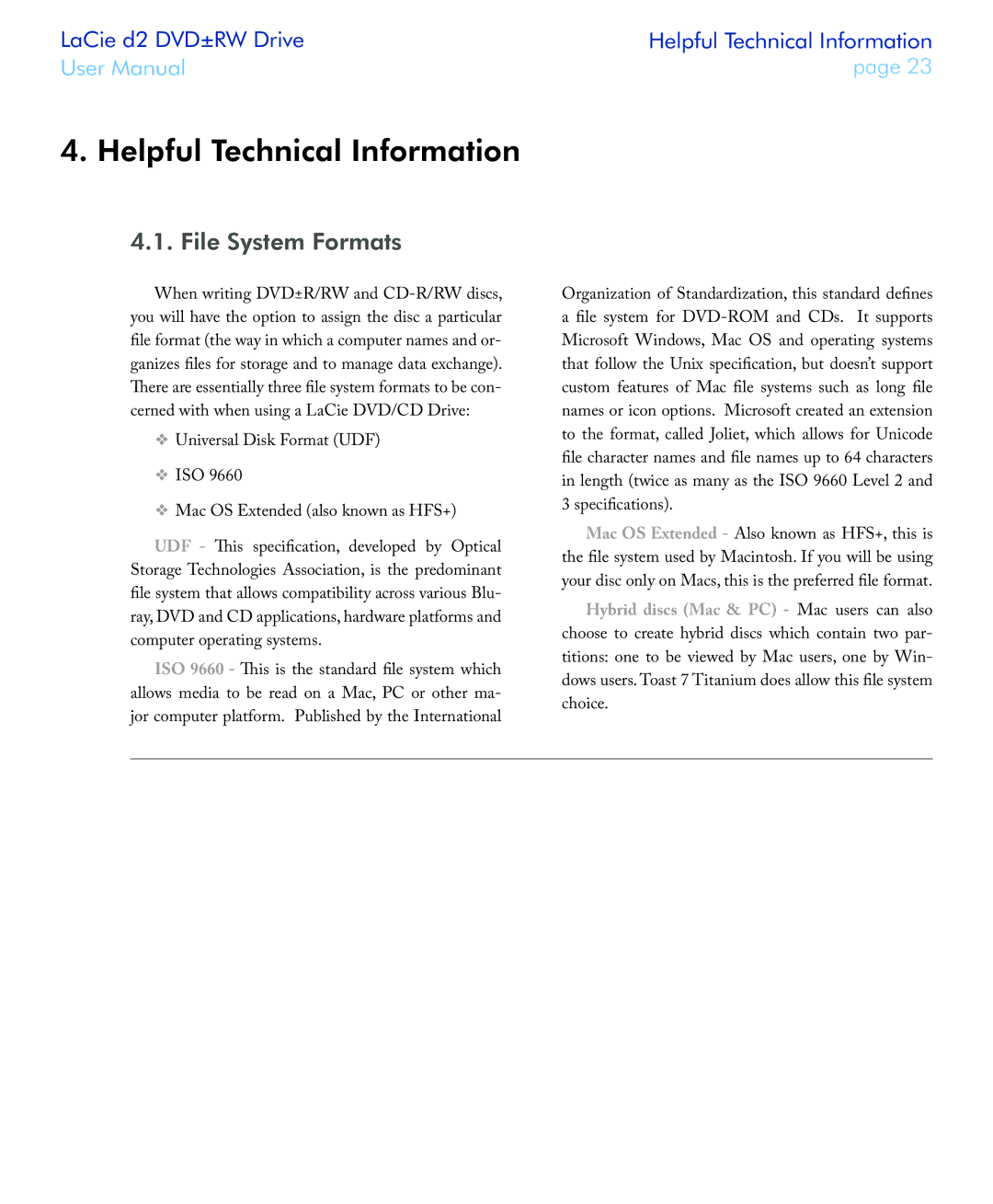
LaCie d2 DVD±RW Drive | Helpful Technical Information | |
User Manual | page 23 | |
|
|
|
4. Helpful Technical Information
4.1. File System Formats
When writing DVD±R/RW and
❖Universal Disk Format (UDF)
❖ISO 9660
❖Mac OS Extended (also known as HFS+)
UDF - This specification, developed by Optical Storage Technologies Association, is the predominant file system that allows compatibility across various Blu- ray, DVD and CD applications, hardware platforms and computer operating systems.
ISO 9660 - This is the standard file system which allows media to be read on a Mac, PC or other ma- jor computer platform. Published by the International
Organization of Standardization, this standard defines a file system for
Mac OS Extended - Also known as HFS+, this is the file system used by Macintosh. If you will be using your disc only on Macs, this is the preferred file format.
Hybrid discs (Mac & PC) - Mac users can also choose to create hybrid discs which contain two par- titions: one to be viewed by Mac users, one by Win- dows users. Toast 7 Titanium does allow this file system choice.
